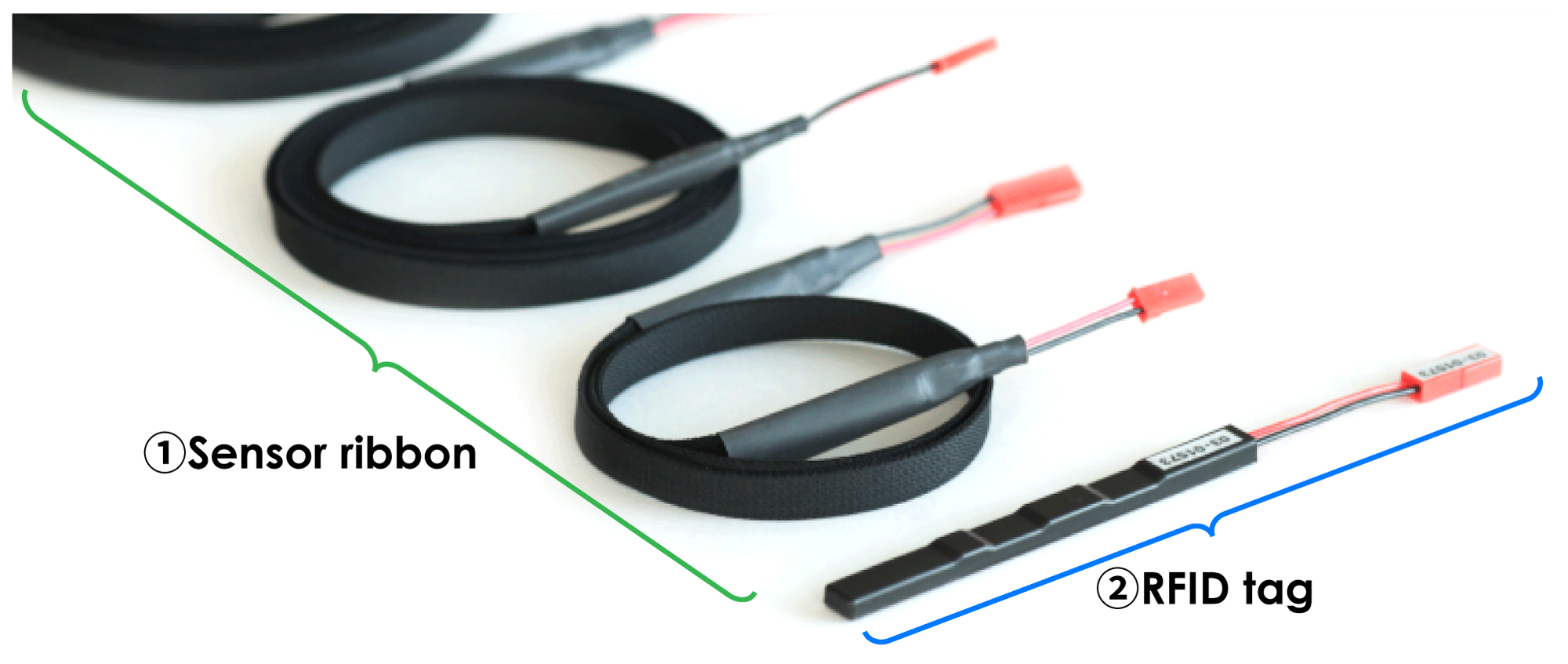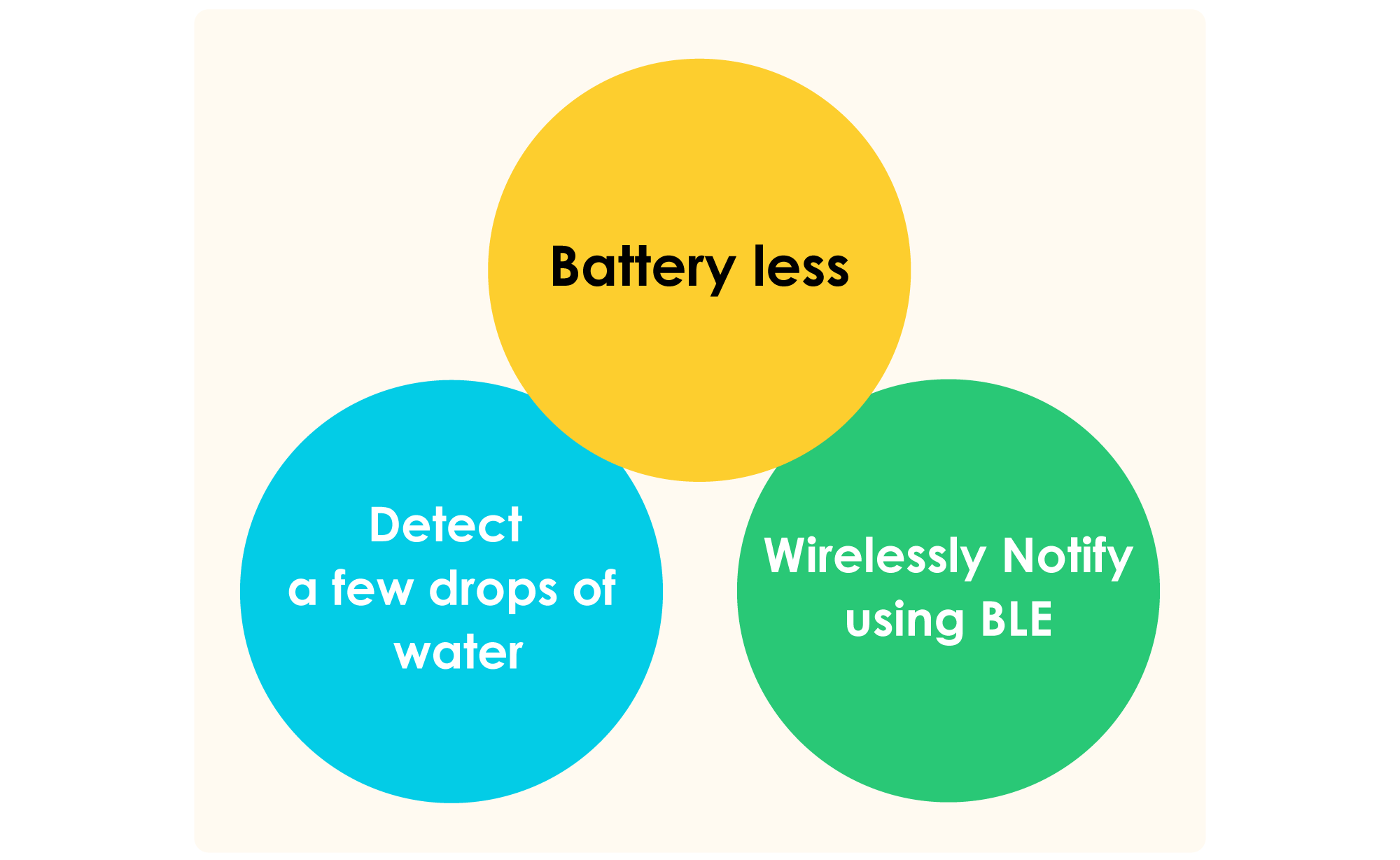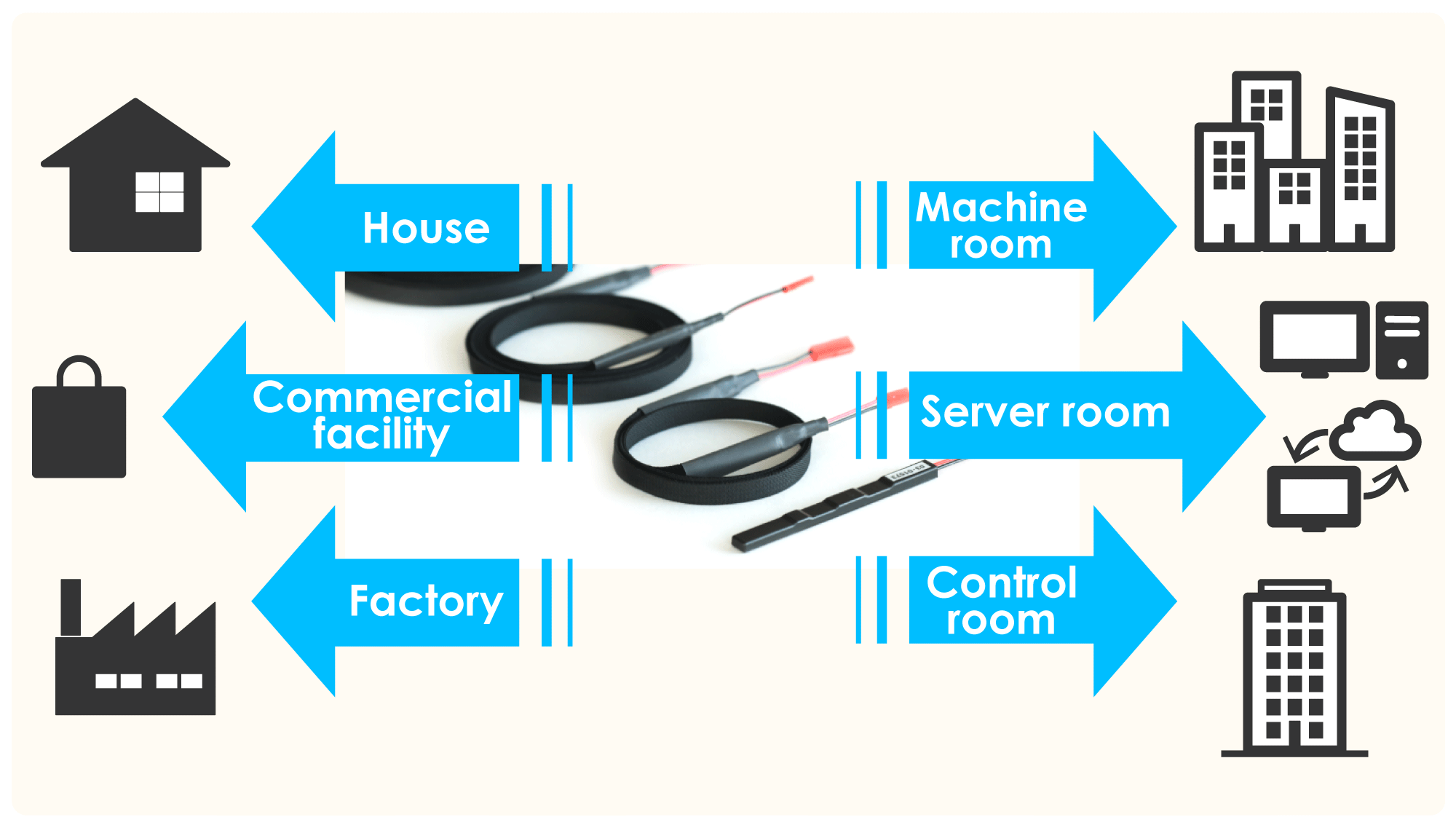![]() 11/10/2020
11/10/2020
Techanalye Co.,Ltd.
Energy harvesting is the process in which energy is captured from a minute energy around us into usable electric power. In the No.14 issue of this column, I introduced CLEAN-BoostⓇ, an energy harvesting technology of ABLIC Inc. Using this technology, a “Battery-less water leakage sensor” which generates power using a small amount of water and notifies water leakage has been on sale since July 10, 2019 (see Fig.1). This time, I will introduce this product which is used in various fields.

- ① Sensor ribbon : Sensor ribbons of different lengths (0.5 m, 2 m, 5 m) can be connected to construct a sensor of arbitrary length. It generates electric power by absorbing water leakage.
- ② RFID tag : The electric power generated by the sensor is stored, and when the electric power required for communication is stored, the voltage is boosted. BLE (Bluetooth Low Energy®) is used to wirelessly transmit data to an arbitrary receiver.

"Battery-less water leakage sensor" has three key features (see Fig.2). As the name implies, it runs without batteries, can detect just a few drops of water, and can be wirelessly notified using BLE (Bluetooth low energy®). What is so great about these? Let us compare with the existing “water leakage sensor" in Fig.3.
There are many types of "water leakage sensors" and various manufacturers sell the products. In large-scale systems, a leak sensor and a centralized monitoring control panel are connected by wire, and when a leak is detected, a display on the control panel or an alarm buzzer is used to notify the operator. Others are placed on the floor or on the ground, and when a leak is detected, a flashing light or buzzer sounds to alert the user. In any case, electric power supply is required. The former requires installation work to secure the power supply and connect the sensor and the monitoring panel. The latter also requires periodic battery replacement. In both cases, it is difficult to detect small drops of water. Also, when water leaks, it is difficult to respond quickly unless someone notices a lamp or buzzer.
The "Battery-less water leakage sensor" does not require a power supply or wiring, so there is no need for construction and installation is easy. That means it can be installed in any location and does not even require regular battery changes. It can also be used in environments that are sensitive to water, where even slight condensation can interfere. The detected information can be reported wirelessly, so it can be used in unmanned locations. "Battery-less water leakage sensor" is a unique, ultra-energy-saving, ultra-sensitive IoT water leakage sensor that no other product can match.

This "Battery-less water leakage sensor" was developed jointly with Taisei Corporation, and the introduction of this system has been studied in various sites such as houses, commercial facilities, factories and server rooms, and some of them have already been installed. In addition, since it does not require additional power supply or wiring work, it can be used for flood control measures such as power control rooms in the basement of aging buildings (see Fig.4). We have already seen a lot of "Battery-less water leakage sensor" in various fields. Next time I will consider some issues to expand their use.